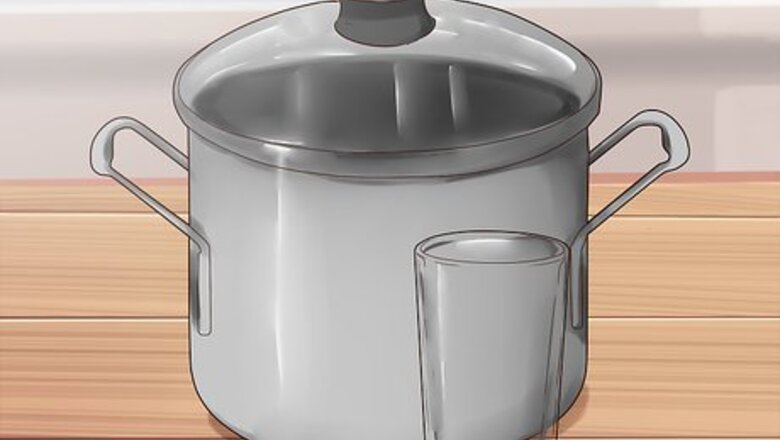
views
How to Use a Pot and Stove

Get a large pot with a lid and an empty drinking cup. The glass should be big enough to hold a fair amount of freshwater. Make sure the glass is short enough that you can still put it inside of the pot with the lid on it. Use a pot and lid that are meant to be heated on a stovetop. A Pyrex or metal cup is safest, as certain types of glass will explode when exposed to heat. Plastic may melt or deform.

Pour some saltwater into the pot slowly. Do not overfill the pot. Stop well before the water level has reached the mouth of the glass. This will help to ensure that no saltwater splashes into the glass while it is boiling. You don't want to get any saltwater into the drinking glass, or your newly made fresh water will be contaminated.
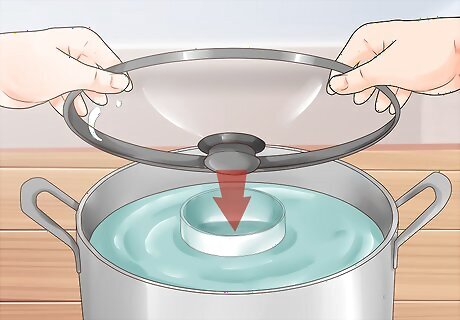
Place the pot cover upside down on the pot. This will allow the water vapor to drip into the drinking glass as it condenses. Position the pot lid so that the highest point or handle of the lid is facing down towards the glass and is directly above the glass. Make sure the pot lid has a good seal with the edges of the pot. Without a good seal, a lot of the steam will escape and this will reduce the supply of fresh water vapor.

Bring the water to a slow boil. You will want to boil the water slowly over low heat. A violent full boil can contaminate the drinking water by splashing into the glass. Too much heat can cause the glass to break. If the water is boiling quickly and violently, the glass may shift away from the center of the pot and the handle of the pot lid.
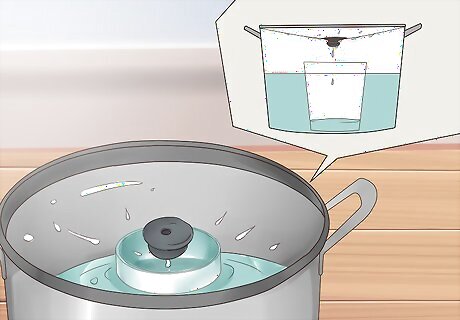
Watch the pot as the water condenses. When water boils, it becomes pure vapor, leaving behind anything that was dissolved in it. As the water becomes vapor, it condenses in the air as steam and on the lid's surface as water droplets. The droplets then run down to the lowest point (the handle) and drip right into the glass. This will probably take 20 minutes or more.
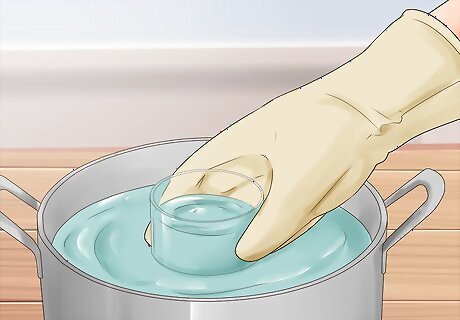
Wait a little while before drinking the water. The glass and water will be very hot. There may be a small amount of saltwater left in the pot, so be careful when removing the glass of freshwater not to splash any saltwater into your freshwater. You might find that the glass and fresh water will cool faster if you remove it from the pot. Be careful as you remove the glass so you don't get burnt. Use an oven mitt or potholder to take it out.
How to Use Solar Desalination
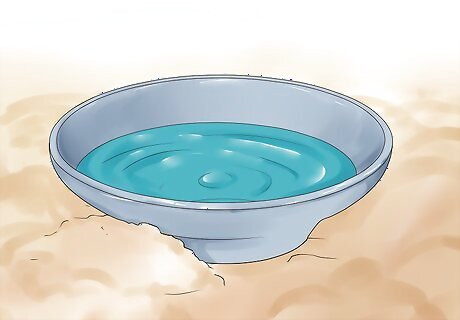
Collect salt water in a bowl or container. Make sure you don't fill it up all the way. You will need to leave some space at the top of the bowl so that the saltwater doesn't splash into your freshwater receptacle. Make sure your bowl or container is watertight. If it is leaking, your saltwater will drain away before it can form steam to condense as freshwater. Make sure you have plenty of sunlight because this method takes several hours.

Place a cup or smaller container in the center. Do this slowly. If you do this too quickly, some saltwater might splash into your cup. This will contaminate your freshwater as you collect it. Make sure the lip of the glass remains above water. You might need to weight it down with a rock to prevent it from sliding around.
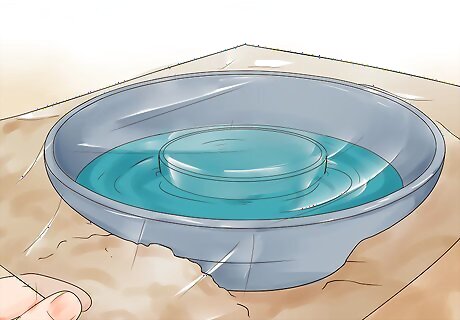
Cover the bowl with plastic wrap. Make sure the wrap isn't too loose or too tight. Be sure that the plastic wrap has a tight seal on the rim of the saltwater bowl. If there are any leaks in the plastic wrap, steam or freshwater vapor might escape. Use a sturdy brand of plastic wrap so it doesn't tear.
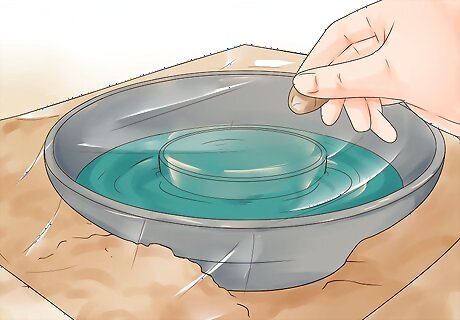
Place a rock or weight in the center of the plastic wrap. Do this just above the cup or container in the center of the bowl. This will cause the plastic wrap to dip in the center, allowing fresh water to drip into your cup. Make sure your rock or weight isn't too heavy or it will tear the plastic wrap. Make sure the cup is in the center of the bowl before continuing.
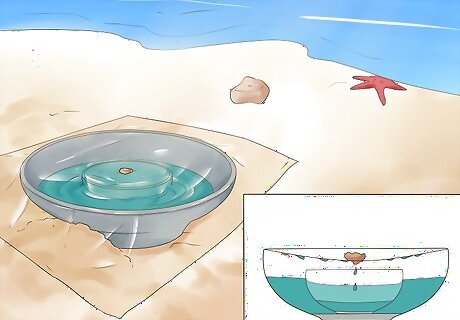
Place the saltwater bowl in direct sunlight. This will heat the water and cause condensation to form on the plastic wrap. As condensation forms, freshwater droplets will drip from the plastic wrap and into the cup. This will allow you to slowly collect freshwater. This method takes several hours so be patient. After you have enough freshwater in your cup, you can drink it. It is safe and completely desalinated.
How to Turn Seawater into Fresh Water for Coastal Survival
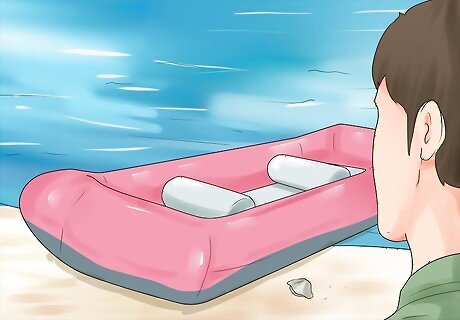
Find your life raft and any other debris. You can use parts of your life raft to construct a system for making freshwater from seawater. This method is most helpful if you are stranded on a beach with no fresh water. It was developed by a stranded pilot during WWII in the Pacific.
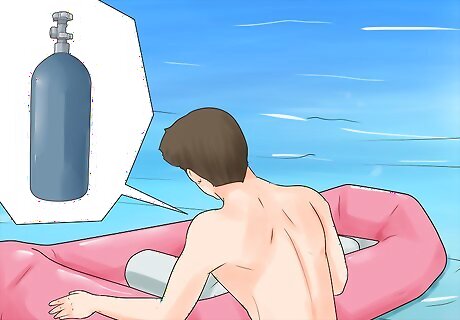
Find the gas bottle from your life raft. Open it and fill it with sea water. Filter the seawater through a cloth so you don't get too much sand or other debris in the water. Don't fill the bottle up too much. You will want to avoid spilling the water out the top of the bottle. Carry the water back to an area where you can make a fire.
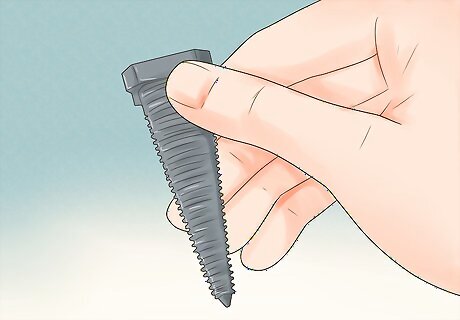
Find the hose and leak stoppers from the life raft. Attach the hose to one end of the leak stoppers. This will provide a tube for fresh condensed water vapor to travel out of the bottle of seawater as its heated. Make sure the hose is free of kinks or clogs. See that the seal between the hose and leak stoppers is strong. This will help you to avoid any freshwater leaking out of the hose.
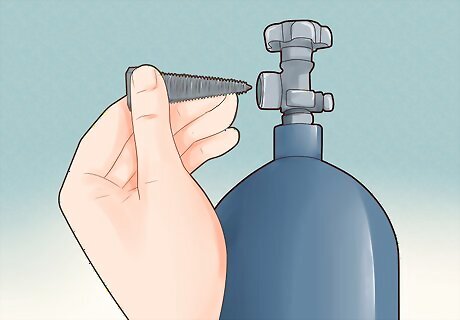
Plug up the top of the gas bottle with the leak stoppers. Use the opposite end of the leak stoppers from where you've attached the hose. This will provide a way for water vapor to travel from the bottle as it’s heated into the hose to transport fresh water. Make sure the seal is tight to prevent leaks. If you have any twine or tape, you can reinforce the seal with these items.
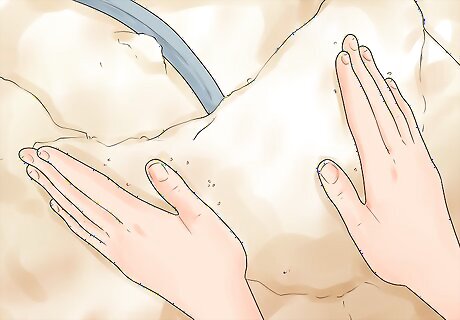
Build a bank of sand and bury the hose. This will keep the hose steady as fresh water travels through it. Keep the end of the hose exposed. This is where fresh water will trickle out. Don't bury the gas bottle or leak stoppers. You will need to have this exposed to keep watch to make sure there are no leaks. Make sure the hose is relatively straight and free of kinks as you bury it. Place a pan underneath the exposed end of the hose. This will collect water the fresh water.
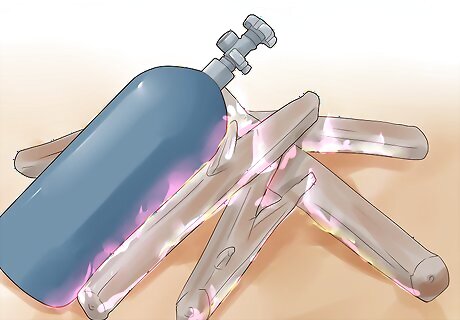
Make a fire and place the gas bottle directly above the flame. This will boil the saltwater in the bottle. As the water boils, steam will condense in the top of the gas bottle and travel into the hose as freshwater. The water collected in the pan will be desalinated and safe to drink.


















Comments
0 comment